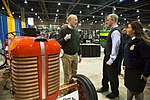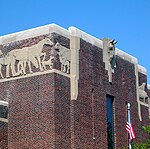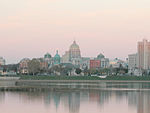Capital Area Greenbelt
The Capital Area Greenbelt is a looping trail located in the area of Harrisburg, Pennsylvania. This 20-mile loop around Pennsylvania's capital city provides visitors and tourists with opportunities to hike, ride bicycles, skate, jog, fish, walk their dogs, spot rare birds, learn about history, enjoy native flora and fauna, and appreciate nature. While parts of the trail are shared with roads, most of the loop is a dedicated path. The Trail, as it is commonly referred to by locals, passes along the Susquehanna River through Reservoir Park, Riverfront Park, Five Senses Garden, and Wildwood Park and Nature Center. In addition to parks, the Capital Area Greenbelt passes alongside attractions including the grave site of John Harris Sr. (the namesake of the city of Harrisburg), the Governor's Mansion, Fort Hunter, Harrisburg State Hospital, and the National Civil War Museum.
Excerpt from the Wikipedia article Capital Area Greenbelt (License: CC BY-SA 3.0, Authors).Capital Area Greenbelt
Sycamore Drive,
Geographical coordinates (GPS) Address Nearby Places Show on map
Geographical coordinates (GPS)
| Latitude | Longitude |
|---|---|
| N 40.28317 ° | E -76.87196 ° |
Address
Sycamore Drive 398
17110
Pennsylvania, United States
Open on Google Maps






